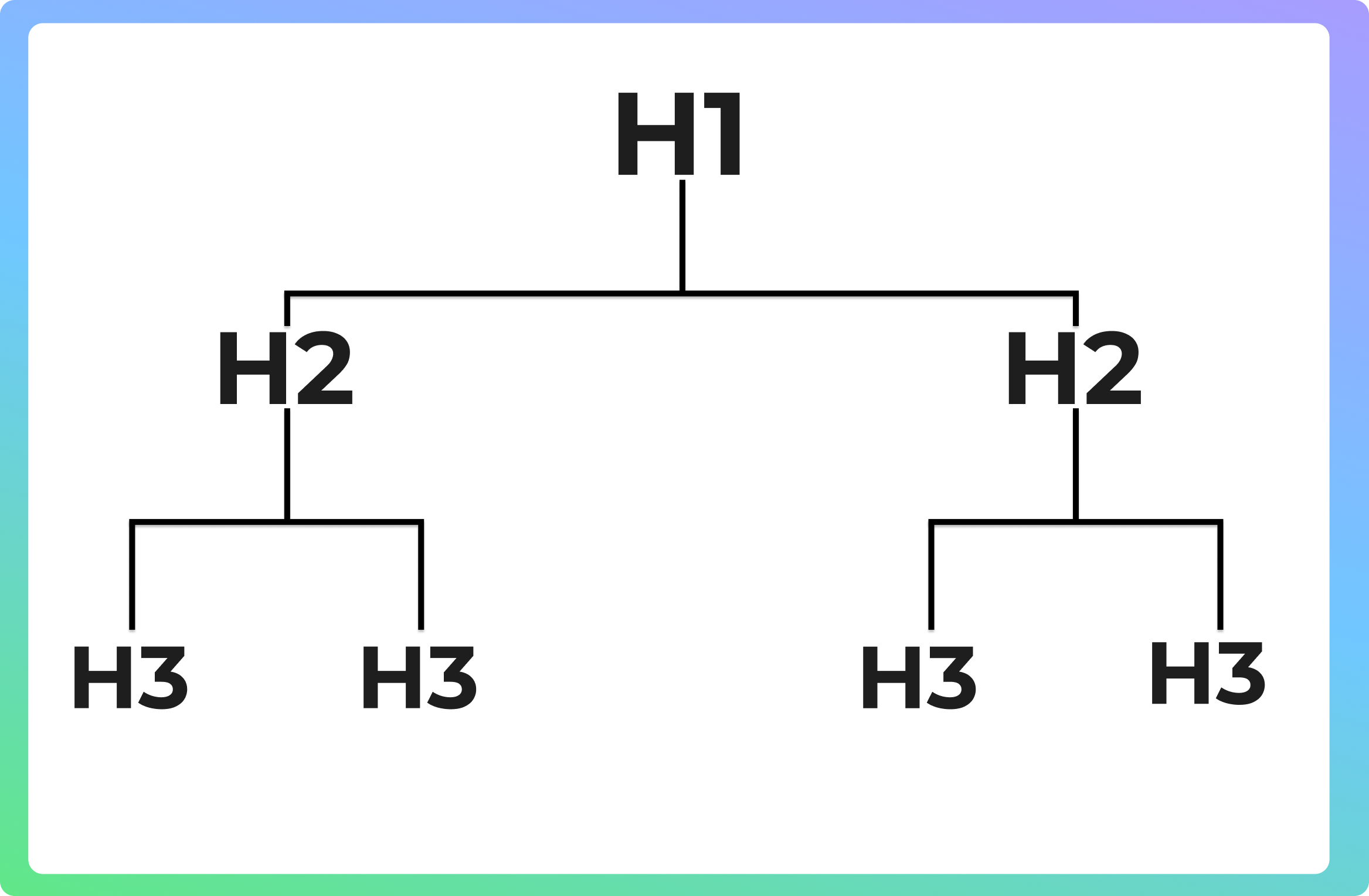An SEO’s Guide to Headings
What are Headings?
Headings on web pages are used to inform the reader what the following text is going to be about and when used correctly they can provide a good overview of the page. When it comes to how headings are coded, there are six different levels available, ranging from H1-H6. H1s are usually the title of the page and headings H2-H6 are the ‘subheadings’. So an H6 is a sub-sub-sub-sub-subheading.
Heading hierarchy
As their names would suggest, the higher the number included in the heading name, the higher up the hierarchy they are.
Here’s a quick guide on the different header names and what each of them are used for:
H1 - This is normally (but doesn’t have to be) the title of the page/ post. They are great for placing keywords and highlighting the main idea of the page.
H2 - The first of the ‘subheadings’. These section the main points of the page and are still a great place to add in keywords
H3 - These are further subheadings that help clarify or expand upon the points made within the H2 above them.
H4-H6 - Similarly to H3s, each of these subhead and expand upon the points above them
Heading sizes
As a stylistic point to help identify what level of ‘H’ you are on, H1s are generally the largest in font size and then the font size for each type of header decreases depending on the number in their name.
H1 Headings
H1 headings are the most important heading in your page, from an SEO point of view they should almost always also be the title of the page or post, but they do not have to be. As a general rule, H1 headings shouldn’t be over 60 characters long, but it’s more important that it is one that works for your page and is able to convey the main point and message that you want to put across.
H2-H6 Headings
The most important thing to remember is that when using these headings is that you use them logically and in order, using the diagram above to help you keep the order consistent, aiding both search engines and your readers to find cohesion throughout your web pages.
What do heading tags mean for SEO?
When it comes to SEO, headings are useful for allowing both the reader and the search engines to analyse what the page is about. If you’re targeting a topic you want to rank in Search, headings are a useful space to place your keywords as they should indicate the main theme of your content.
It’s also important that they’re used correctly on the page in the right order. This is important for SEO as it can mean the difference between getting a featured snippet and ranking second.
They’re also important for the accessibility of your website, assistive technologies, such as screen readers, use the headings to provide a better experience for those with disabilities.
Why should we use headings?
As stated, headings add purpose, direction and a hierarchy to your page, not only for the person reading your content but also for the search engine that decides whether or not to show the potential reader your content in the first place. If your headings are used correctly and you use them to include the keywords you need for your website, the headings can also indicate to Google that your website would be ideal for it to include in their featured snippets, which, obviously, is great exposure for your page and invites more visitors to your website.
Do headings improve rankings?
Yeeesss, though the importance that they hold has decreased over time. As they help search engines to “understand” your content, when your headings are done correctly they can help improve rankings.

